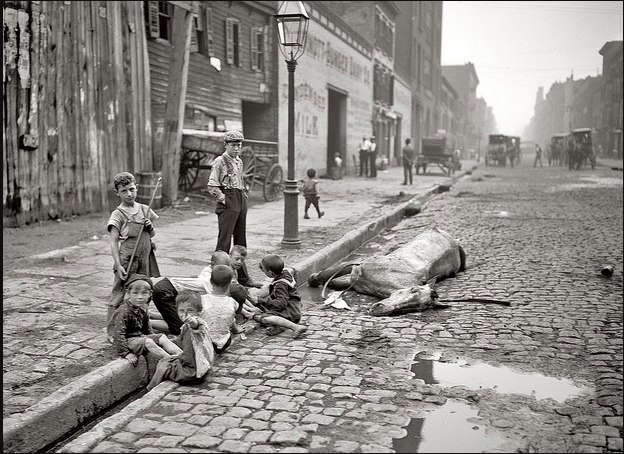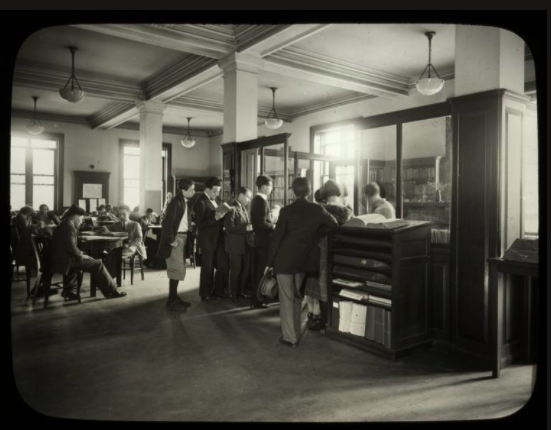“Escape” with the Lower East Side Jewish Conservancy
By Sue Weston and David Dobkin
Tours of New York City, especially Jewish landmarks, have become a hallmark of the Lower East Side Jewish Conservancy. This non-profit group continues to deliver the streets of the city into our living rooms with the technological wizardry of Zoom. What more appropriate way to spend the evening while we are social distancing then Coping with Crowds: “ESCAPES” on the Lower East Side. Tour-guide, and teacher extraordinaire Dr. Sharon Keller lit up the night with her excitement, sharing photo’s bridging the past and present, skipping from NYC at the turn of the 20th century to today. Sharon who currently teaches at Hofstra University held appointments at NYU, Hunter College, the Jewish Theological Seminary, and Hebrew Union College teaching biblical text, history, archeology. She has written extensively about the interplay between biblical Israel and ancient Egypt.
New York City at the Turn of the Twentieth Century
We stepped back in time to the 1890s to gain some perspective of class differences between the haves and the have nots looking at 11 Ludlow Street and 120 East 73rd Street (the Upper East Side). People of privilege traveled in splendid horse-drawn carriages, the differences ran far deeper, stemming from hygiene and overcrowding. The Lower East Siders were tenement dwellers, impacted by the absence of indoor plumbing and running water was absent highlighted by the Tenement Act of 1867 which required one outhouse for every 20 residents. According to the History Channel, almost two-thirds of the population in New York City, 2.3 million people lived in tenements. They lacked proper ventilation, lighting and were overcrowded with as many as 12 adults slept in a room some 13 feet across. Social reformer Jacob Reiss led the movement by showcasing the condition through photographs and writing.
Over Crowded Streets of the Lower East Side
The olfactory factor was measured and mapped by NYC to identify where industries could be located to control odors. Children played in NYC streets which were over crowed, contained open sewers, and trash. Looking at a picture of children playing on the street beside a dead horse, Sharon explained that it took four days to remove a dead carcass from the street, the streets accumulated approximately 4 tons of manure daily. The streets were filthy. The Department of Street Cleaning created in 1881, (renamed the Department of Sanitation in 1929) tackled the almost impossible task of cleaning the streets. Of course, there were the iconic pushcarts on Hector Street, which numbered 2,500 in the 1900s.

Finding A Solution
It was not until January 1940 as part of the war on pushcarts that Mayor LaGuardia opened an in-door market house, located on Essex Street, housing 475 stalls. LaGuardia used federal WPA funds to create several indoor markets required to have running water, rail facilities, and loading platforms. These markets moved businesses off the street.
In 1886 the Aguilar Free Library was open, providing reading matter to the poor Jewish immigrants in the city. In 1896 it housed over 140,000 books. Interestingly the most popular books were Uncle Tom’s Cabin and Around the World in 80 Days. People across all walks of life congregated in the reading room, giving them a place to go away from the crowded tenements. Renamed the Steward Park Library it offered sewing on the roof, giving women a place to go with lights.

Steward Park, which opened October 17, 1903 and was the first permanent city-funded playground in the United States, providing outdoor recreation, including a pool and play equipment for an escape from tenement-life.
Public bathhouses were built even before pools giving residents a way to wash, with one bathtub for every 79 families, designed for hygiene, not leisure. The Allen Street Bathhouse remained in use for more than 75 years. Sharon commented that the bath tubs were replaced with showers, which boasted strong water pressure, and lasted 90-seconds.
Street performers and theater provided entertainment. Sharon discussed the Automatic One Cent Vaudeville and an arcade which opened in 1904, with the Crystal Movie Hall that showed 30-second movies for five cents. Other notable locations included: Loew’s Canal Street Theater which in 1935 was the second-largest theater in NY, The Sunshine Theater, and Hudson Hippodrome.
The miracle of Google maps and NY Times Archives enabled us to witness the transformation of the Lower East Side from its humble beginnings to the present. Sharon shared stories that make the overcrowded, filthy living situations of Jewish tenement dwellers, come alive. She provided context for the stories of our ancestors playing slick ball or craps in the streets, hawking papers, licking blocks of ice to cool down, swimming in the fountains or swimming in the East River. Looking back, it’s amazing how far we have come!
***
Our ratings are based on how many challahs it pays to buy (rather than make) in order to see the play, show, film, or exhibit being reviewed. (5 Challah is our highest rating)
“Coping with Crowds: “ESCAPES” on the Lower East Side” received a 5 challahs






